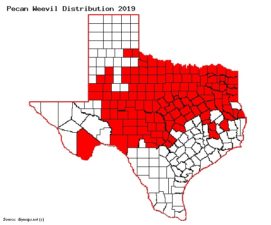
Exploring the Origin of the Pecan Weevil Quarantine
Dear Readers, After 31 years of service with Texas A&M AgriLife Extension, which has included over 360 Pecan South articles, I will be retiring at the end of August 2019 which makes this my last article in Pecan South. Over the 31 years, I have tried to provide timely and useful information for producers and...
Read more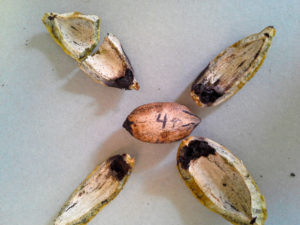
Observing Hickory Shuckworm’s Impact on 2018 Kernel Quality
During the second half of the season, producers are faced with several potential pest issues. Black aphids, scorch mites, stink bugs, pecan weevil, and hickory shuckworm are all potential issues, and of these insects, not much research has been done with hickory shuckworm for many years. Some of the reasons for this lack of research...
Read more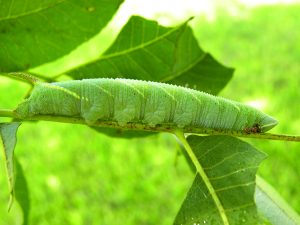
Foliage-Feeding Caterpillars threaten more than just leaves
Over the past several weeks, I have received numerous calls and emails regarding foliage-feeding caterpillars on pecan trees. Currently, there are several Texas counties reporting infestations of walnut caterpillar, most of which are in residential areas and on trees not treated for pecan nut casebearer. The most common calls I have received have related to...
Read more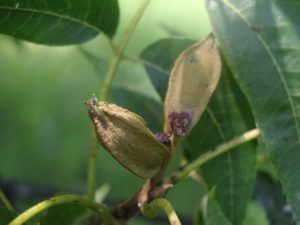
Beware the Second Generation of Pecan Nut Casebearer
If you’re in the pecan business, there’s something you should know. The pecan nut casebearer must be controlled. This fact has been reiterated countless times in this magazine, and PNC management remains a standard topic at spring county field days. Typically, the recommendation emphasizes managing the first generation and focuses on using pheromone traps to...
Read more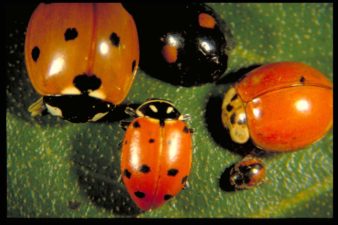
Natural Enemies: An Underappreciated Complement to IPM Practices
During the first week of April, while checking bark beetle traps in an orchard near my office, I was amazed by the very healthy and robust population of lady beetles feeding on aphids from infested weeds and wildflowers. Viewing this activity got me to thinking that so much time is spent addressing the pest problems...
Read more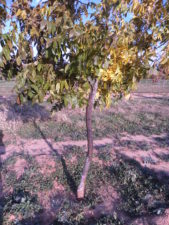
Stressed Trees Subject to Insect Attacks
Overall, pecan producers strive to provide the best care they can to their trees in order to achieve the production needed for their operation; unfortunately, there are events—generally climatic—that are out of our control that can be detrimental to tree health. Events such as hurricanes, excess rain, drought, and late spring freezes can all create...
Read more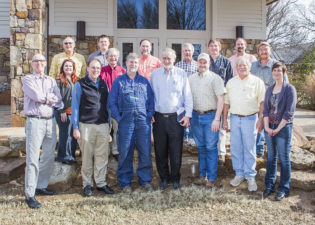
Meet the “Southern Region Integrated Management of Pecan Arthropod Pests” Group
For this month’s column, I would like to recognize a pecan working group that many of you may not be aware of and highlight a few of its accomplishments: the “Southern Region Integrated Management of Pecan Arthropod Pests” group. The project group was initiated in 1972 when researchers from land-grant universities across the United States...
Read more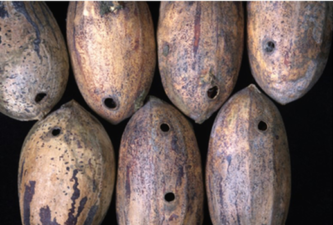
Verifying Pecan Weevil Damaged Pecans Through Microscopic Examination
Pecan weevil is one of the most important nut-infesting insects of pecan and as such this insect is not only a producer issue but also a state and industry problem. Making positive identifications of an infestation can be important for making management decisions, purchasing property for future orchards, determining new infestations/new county records, and following...
Read morePest Management and Production Information Sources
Producers have gotten their crop in, and we are entering the start of another growing season. During this off-season, I usually get requests for information on various pest problems; so for this month, I would like to point out some information sources, through which growers may browse for articles or information during their downtime or...
Read more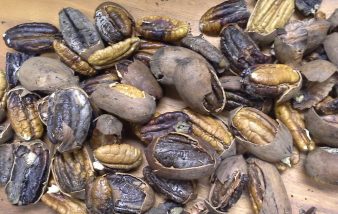
Hunting Down the Cause of Black Pecan Kernels
This month’s column deals with the issue of black pecan kernels, which I have seen throughout my entire career. This problem is not the same as stink bug damage which is localized black spots on the kernel. This black kernel issue as shown in the pictures can have different degrees or levels of blackening. Some...
Read more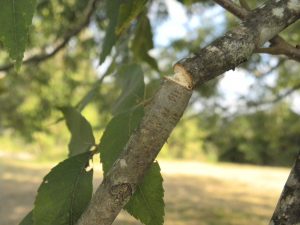
Twig Girdlers: A Case of Nonselective Pruning
Every fall I receive calls and emails concerning small severed twigs under pecan trees and this year has been no different. In fact, one producer said this has been the worst year ever. As an economic pest and impact on production, the twig girdler is pretty much a nuisance. However, it can be a different...
Read more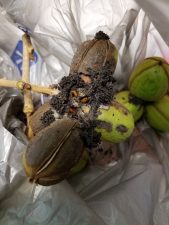
Shuck Tunneling Larvae to Watch for in Pecans
Starting around mid-September and continuing through October, I routinely receive samples and email pictures of pecans from producers and homeowners that want to know “What is feeding in the pecan shucks?” In fact, I received two samples in one week from a homeowner with that very same question. There are two moth larvae that I...
Read more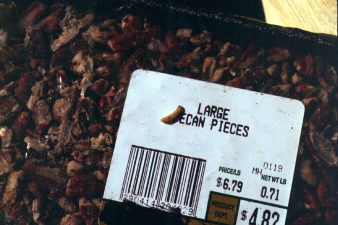
Steps to Prevent Post-Harvest Insect Losses
Unfortunately, I think all of us, including myself, have had some experience with stored product insects. I mean who hasn’t found a moth or some beetles in their kitchen pantry. These cosmopolitan pests feed on a wide range of food materials and can be found anywhere along the food supply chain from production areas and...
Read more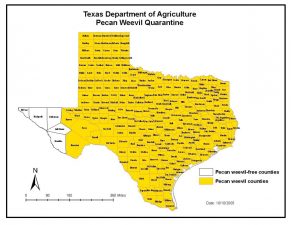
Pecan Weevil: Historical Texas distribution records and the Texas Quarantine
The pecan weevil has always been an important production pest, but over the past four or five years, the pecan weevil has received a lot of attention due to new county detections in Texas and the ongoing problems it is causing in New Mexico. This insect is indigenous to North America with distribution, as reported...
Read more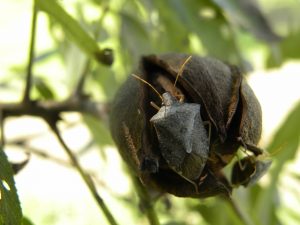
Stink Bug Management: a challenge for all producers
First, I would like to refer to an excellent article by Monte Nesbitt from the August 2010 issue of Pecan South titled “Victory or Defeat in August,” where he talks about the difficulty in producing pecans during August. This difficulty not only applies to the horticultural challenges of filling out kernels, but this is also...
Read more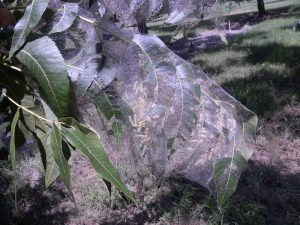
Fall Webworm—Not a Big Threat, Just a Big Pest
One of the most visible and obvious insect infestations on pecan has to be the fall webworm, where those unsightly webs seem to just appear overnight. The fall webworm is native to North America where it feeds on a wide range of deciduous trees and shrubs, with feeding preferences varying on geographic regions. In North...
Read more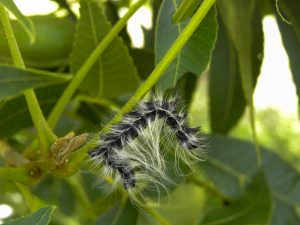
Walnut Caterpillar: Early detection is the key to prevent economic loss
During the growing season, there are several major nut feeding insects—such as pecan nut casebearer and pecan weevil—whose occurrence in an orchard can be anticipated and treatments are applied based on damage threat. Although these two pests are generally considered the two most important pecan feeding insects and as such can have a tremendous impact...
Read more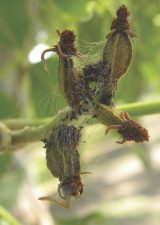
Spring Has Arrived, Time to Order PNC Pheromone Traps
Although it is only early March at the time of this writing, the redbuds are in bloom and a few bluebonnets are out here in the College Station area. Spring has arrived, and it is time to start thinking about ordering your casebearer pheromone traps and lures. I feel that anyone in the pecan business...
Read more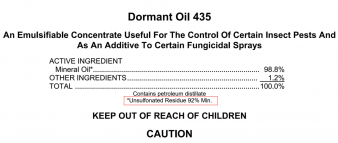
Back to Basics: Revisiting & Understanding Horticultural Oils
This is a topic I have written about several times in the past, but every year I receive questions concerning the use of dormant oils on pecan so I will readdress this topic again. Horticultural oils have been used in agriculture for over 100 years to control various soft-bodied insects such as scale, aphids, and...
Read more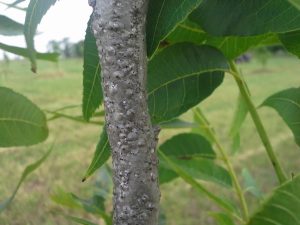
Dormant Season: A Good Time to Monitor for Obscure Scale
We are fortunate that in this day and age of pecan production producers have numerous tools available to help anticipate and control economic damaging populations of insects. There are pheromone traps, adult emergence traps, economic thresholds, online prediction models and a wide assortment of insecticides. However, there are some insects where detection will have to...
Read more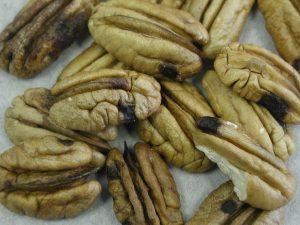
Pecan Grading Demonstrations: A way to evaluate pest problems
As the 2017 season is either finished or winding down for most growers, it is this time of year that I like to look back and evaluate the pest problems that were encountered during the season. One way that I get another view outside of producer visits is through the county pecan shows that I...
Read more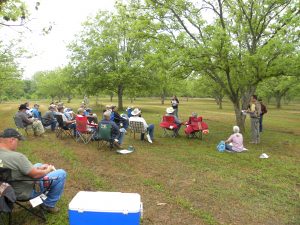
An Endless Treasure Trove of Information, Some Suggested Resources for Producers
As another season comes to a close, I hope that producers will take time to look back on the 2017 season to reflect on and evaluate the different management and production activities on what went right and what could be improved. Fortunately, producers have access to numerous sources available—everything from Extension specialist, websites, Extension publications,...
Read more
Twig Girdlers Frustrate Homeowners and Commercial Producers
Every fall I receive calls and emails concerning small severed twigs under pecan trees so this is a good time to address this issue. In my list of insects that feed on pecans, I have recorded 63 species that feed in the main trunk, branches, twigs and roots. Of these 63 species, 32 are beetles...
Read more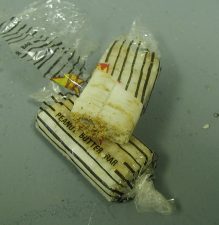
Stored Product Insect Pheromones and Traps Warn of Potential Post-Harvest Problems
As we enter the harvest season, it’s that time of year for me to remind everyone about stored product insects and suggest post-harvest insect monitoring tools. As producers, processors, wholesalers and retailers strive to produce and present a high-quality product, stored product insect detection and management becomes essential. Post-harvest pecans can experience infestations at any level...
Read more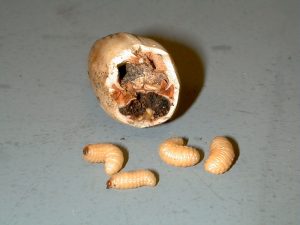
Pecan Weevil: a Producer, State and Industry issue
During my time as the pecan IPM specialist for Texas A&M AgriLife Extension, I have written several articles for Pecan South on pecan weevil management, but for this month instead of a management focus, I would like to address the potential spread of pecan weevil to new areas. I am probably addressing the wrong audience...
Read more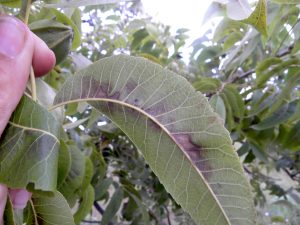
Don’t Forget About Pecan Leaf Scorch Mite!
During the recent Texas Pecan Growers Conference there was an excellent panel discussion on “Varietal, Physiological and Climate Effects on Pecan Quality” with panel members being state pecan horticulturists from Georgia, Louisiana, New Mexico, Texas and the Noble Foundation out of Ardmore, OK. During the discussion, one of the important points that was mentioned several...
Read more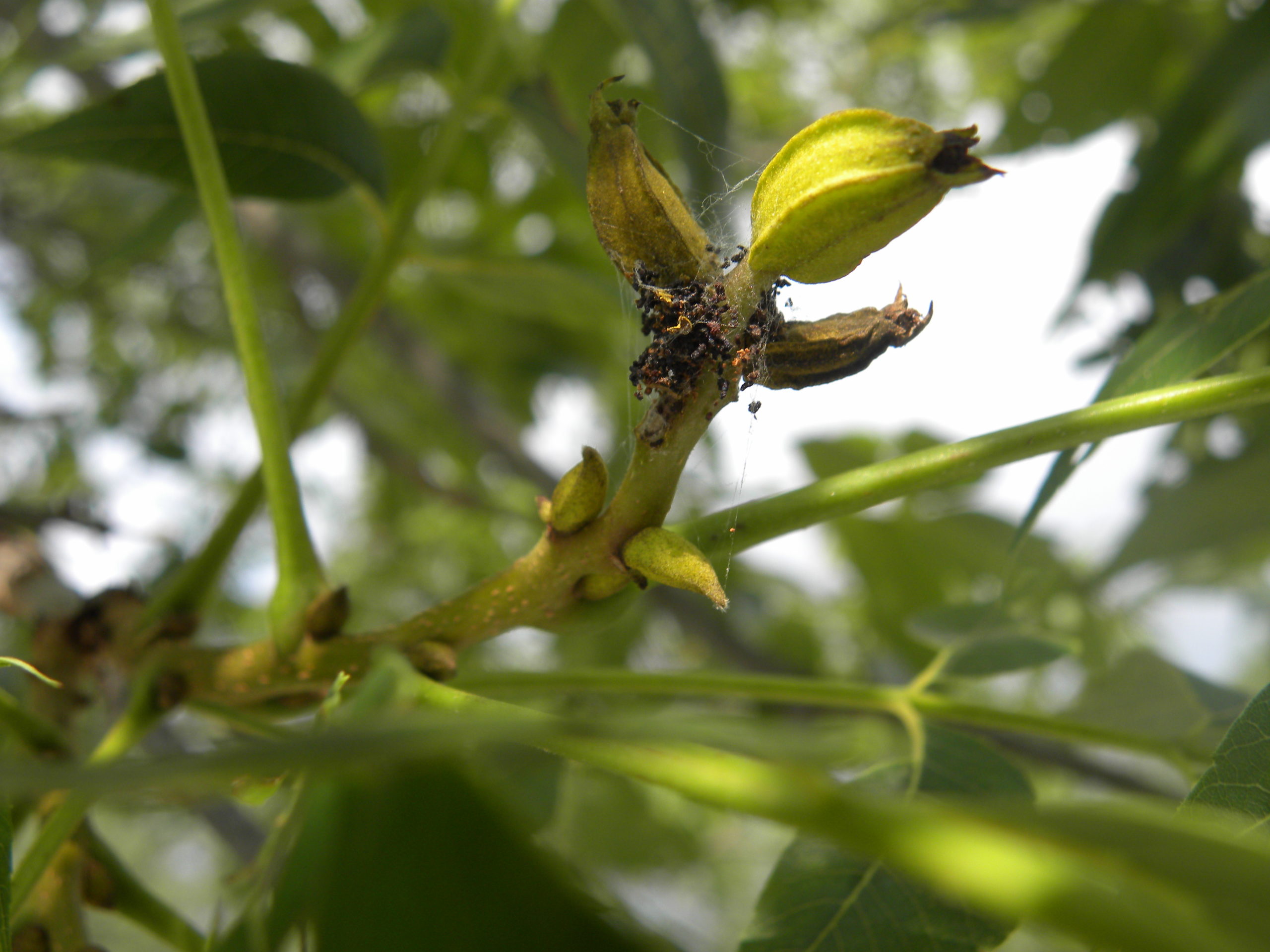
Second Generation Pecan Nut Casebearer: To Treat or Not to Treat?
I believe that almost everyone who is involved in pecan production knows about the importance of pecan nut casebearer management and if not they should. In most years, the first generation of casebearers needs insecticide application to prevent an economic loss caused by the start of its activity. Nutlets are small and one larva can...
Read more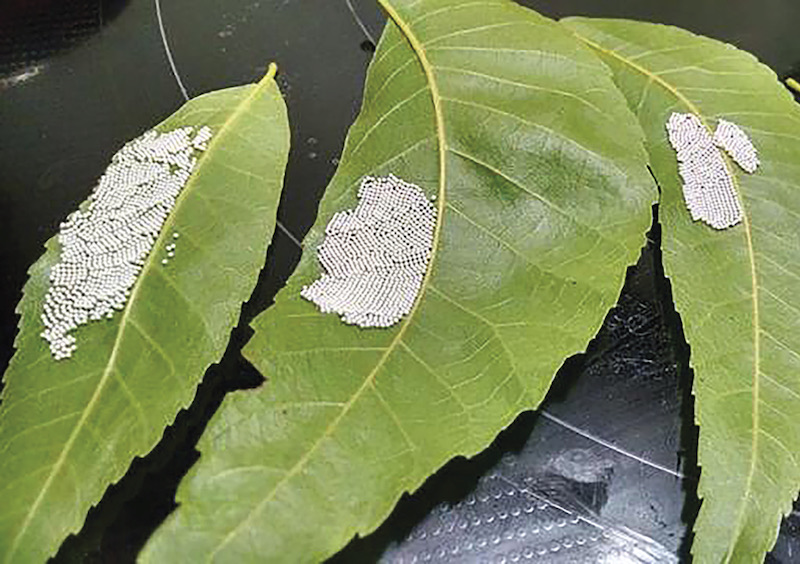
Walnut Caterpillar Activity Reported in Fort Bend County, Texas
Every year I receive reports of walnut caterpillar activity in Texas and at the time of this writing, I have just received reports and pictures of the start of first-generation activity in Richmond, Texas. This area has had infestations in the urban/residential area now for at least 4 seasons and as one Richmond homeowner just...
Read more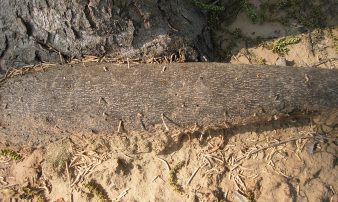
Ambrosia Beetle Not Common, but Merits Attention
Not long after I started my career as the pecan IPM agent with Texas Agricultural Extension Service (as we were called back then), I had a producer from East Texas complain about some insect that was attacking and killing his young pecan trees. At that time I was more concerned about pecan nut casebearer and...
Read morePecan Ipm Program Tackles New Projects
The dogwoods and redbuds are in full bloom and trees are breaking bud so a new season is upon us—ready or not. There will be a lot going on this year with the Texas pecan IPM program so for this month’s column I would like to list a few things that the pecan IPM group...
Read moreNow is the Time to Prepare for Pecan Nut Casebearer
Red buds in bloom, bluebonnets are out and mesquite trees in leaf so spring has arrived early for many of us and all of this earliness has already led to some questions on pecan nut casebearer (PNC) management. As with many insects, PNC develops according to temperature and not a calendar schedule so knowing when...
Read more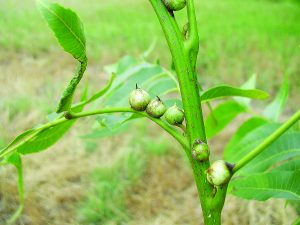
Phylloxera Management Requires Timing
Although it is early February, the recent warm days are a reminder that the beginning of a new year is just around the corner; it’s time to start preparing for another season. One group of early season insects that needs to be discussed at this time are the phylloxera. During May and June, county Extension...
Read more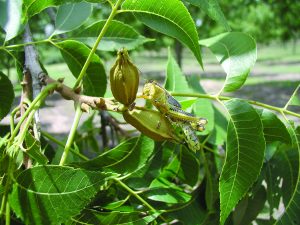
Pecan Insect Resource Coming to IPM Pipe
Over the past five or six years, those of you that have heard me talk have heard me reference the number of different insects that feed on pecan. Years ago, just out of curiosity, I started to compile a list of insects that feed on pecan and currently my list includes 15 nut feeders, 101...
Read more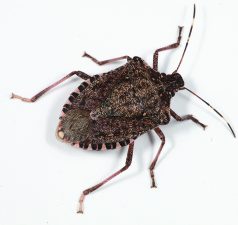
Update on Invasive Ant and Stink Bug Pests
Throughout my career, I have felt that in addition to assisting producers with annual pest problems, I also need to keep my eyes on the horizon for other potential pests that may possibly impact the industry. Two potential pests that are being monitored are the invasive tawny crazy ant and the brown marmorated stink bug....
Read more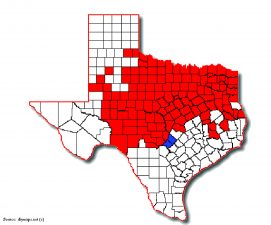
New Pecan Weevil Detection in Texas Raises Concerns
During October of this year, a new Texas county record for pecan weevil was made in Comal County near the Guadalupe River south of Canyon Lake. This new detection raises some serious concerns because the Guadalupe River and the counties within its watershed area are prime pecan production regions. With this new detection, this is...
Read moreZika Virus and What Texas Need to Know
This month’s column is a bit different in that it does not deal with typical production or post-harvest pest problems but rather presents information on a real potential threat to producers. The following information has been taken from the Texas A&M AgriLife Extension publication, ENTO-052, “What Texans Need to Know about Zika Virus,” written by...
Read more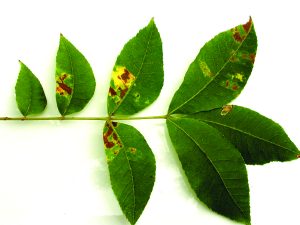
Black pecan aphids – a late season concern
One of the more challenging questions I encounter is “how late in the season can you justify controlling foliage pests?” Honestly, I don’t have a good answer for there are a lot of variables that need to be considered for this question. Considerations such as the pest problem, average date of first frost, variety, amount...
Read more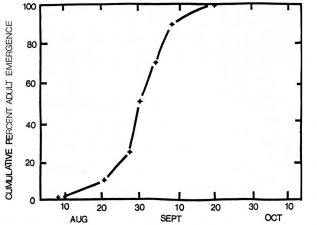
Effective Pecan Weevil Management is Multi-Step Process
During the first week of August, I received two calls concerning the collection of adult pecan weevils — one from Kimble County in southwest Texas and one from northeast Texas along the Red River. These collections really did not surprise me and actually reinforces the data that pecan weevils can begin emergence during early August....
Read more
Scorch Mite a Summer Pest That Cannot be Overlooked
As the growing season enters the hot dry months of mid and late summer, pecans can be subject to infestations from several potential serious foliage pests that may need to be controlled. Insects such as black pecan aphid, yellow pecan aphid, walnut caterpillar and scorch mite can all cause premature foliage loss, which can/will impact...
Read more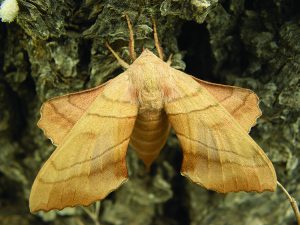
Don’t delay in finding source of foliage damage
At the time of this writing, producers in Texas are past first-generation pecan nut casebearer, are experiencing June drop and I think have a better feel for their potential crop. When it comes to protecting a crop from insect pests, most of us think of pecan nut casebearer, pecan weevil, stink bugs and hickory shuckworm...
Read more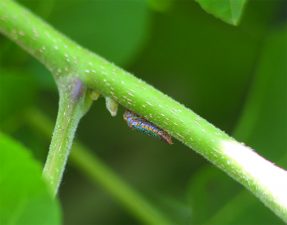
Growers Asking ‘What Are These Insects?’
Over the past week or so I have had several questions concerning some insects that seem to line up and down the new growth of pecans and then run around the other side of the stem when disturbed. And along with producers’ curiosity of this critter is the question, “Do I need to treat for...
Read more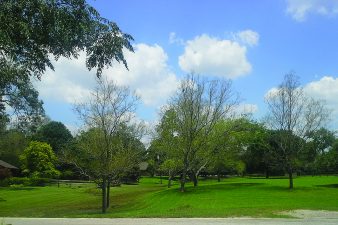
Early Detection is Key to Prevent Economic Loss
During the growing season there are several major nut-feeding insects such as pecan nut casebearer and pecan weevil, whose occurrence in an orchard can be anticipated and, if needed, treatments are applied based on trap collections and stage on kernel development. These two pests are generally considered the two most important nut-feeding insects of pecan...
Read moreTime to Prepare for Pecan Nut Casebearer…Again
At the time of this writing in early March, it is hard to believe that another season is just around the corner; but ready or not, the 2016 season is fast approaching. As we approach the beginning of this new season I want to remind producers that it will soon be time to start ordering...
Read more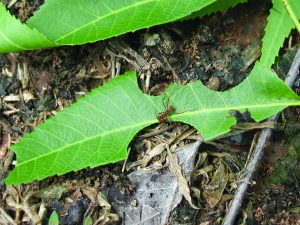
Leaf-cutting Ants Present Difficult Challenges for Producers
The Texas leafcutter ant also known as the town ant, cut ant, parasol ant and fungus ant usually does not come into conversations concerning pecan insects but they can be a problem and sometimes a serious issue in certain areas. And I bet that any producer that has had the unfortunate experience to have had...
Read morePecan Insecticide Recommendation Resources for Producers
For last month’s column I presented information on the cancellation of sulfoxaflor (Closer) use on pecan and since that writing I have received several requests for recommendations for insect control. So, for this month, I would like to highlight some insecticide resources that are available for producers. Insecticide recommendations for pecans can generally be obtained...
Read moreCancellation of Sulfoxaflor (Closer) Insecticide Impacts Pecan Producers
Last month I was informed that the registration for sulfoxaflor (Closer) insecticide had been cancelled by EPA in response to a court ruling. For the past several years Closer has been an important insecticide for pecan aphid management and an important part of a rotational program to reduce the chance for insecticidal resistance in pecan...
Read more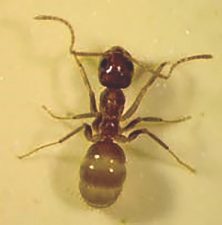
What is potential impact on pecan of invasive pests?
As the Texas A&M AgriLife Extension Program Specialist for pecan IPM, it has been my job to work with producers on their various pest management problems; however, in addition to dealing with some of the more common pest problems, I also try and keep my eyes on the horizon for potential or invasive pests that...
Read more
Tawny Crazy Ants in a Pecan Production System – What is the Impact?
I first wrote about this invasive ant a couple years ago for the October 2013 issue of Pecan South and would like to highlight this invasive insect again. The tawny crazy ant, Nylanderia fulva (initially called the Rasberry crazy ant), is an invasive ant species of South American origin that was first detected in Harris...
Read more
Stored-Product Insect Pheromones, Traps Provide Warnings
Well, it is that time of year and time for me to re-run this article as a reminder about post-harvest insect monitoring tools. With harvest underway and pecans being cracked, shelled, processed and stored, I feel that this is a good time to address stored-product pests. As producers, processers, wholesalers and retailers strive to produce...
Read more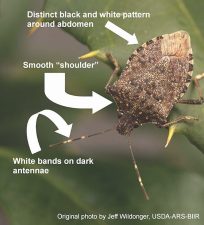
Monitoring for Invasive Pests
In working with the Texas pecan IPM program for many years, I direct most of my time to assist producers with managing the usual production pests such as pecan nut casebearer, pecan weevil, aphids and stink bugs. However, I have always felt that it is just as important to keep watch on the horizon for...
Read more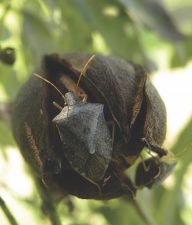
Stink Bug Management Presents Late-Season Challenges for Producers
Given the time of year, I would like to refer to an excellent article by Monte Nesbitt in the August 2010 issue of Pecan South, entitled “Victory or Defeat in August” where he talks about the difficulty in producing pecans during August. This difficulty not only applies to the horticultural challenges in filling out kernels...
Read more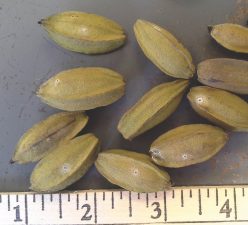
Hickory Shuckworm – Don’t Let This be a Forgotten Pest
For many years now it seems that there has been very little work or published articles (at least that I am aware of) on hickory shuckworm, Cydia carana. For me, shuckworm is still sort of a mystery and our Extension management recommendations have been based on the fact that there was a problem the previous...
Read moreBee Attacks: They can happen; be prepared
This month’s column is a bit different than what I normally write in that it is not about managing some pest or new products but rather about having a plan to protect one’s self from a bee attack while working in your orchard or around your home. My intent for this article is to get...
Read more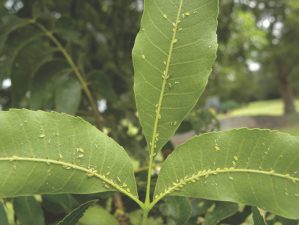
Growers Need to Be Familiar With Pesticide “Group Numbers”
I think that one of the most useful pieces of information, at least for resistance management, that has been placed on pesticide labels is the mode of action classification or “Group Number”. For insecticides this group number classification was developed by the Insecticide Resistance Action Committee or IRAC, http://irac-online.org which is made up of an...
Read more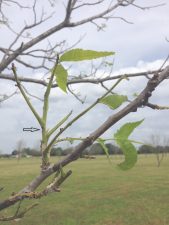
Early Season Foliage Damage Could be Sawfly, June Beetles
As the new season is upon us and we prepare for the casebearer season, there are a few insects that can cause a lot of discomfort and frustration for producers and 2 of these that I frequently receive inquiries about are sawfly and June beetle damage. Unfortunately, we do not have any clear-cut guidelines or...
Read moreTexas Crop Registry – A tool to Minimize Pesticide Drift
I wrote about this topic in my May 2014 column but crop registration has to be renewed each year so this is a reminder that this “tool” is available for producers and this is a good time to sit down and do your registration. I have already received one call this year from a producer...
Read moreCan You Win At An Online Casino?
Table of Contents How To Win Slots At GW Casino Australia Play Roulette and Blackjack at Australia’s GW Casino Strategies To Win At Card Games Play Mobile Version of Australia’s Best Online Casino Can You Win At An Online Casino? How To Win Slots At GW Casino Australia If you’re looking for tips on how…
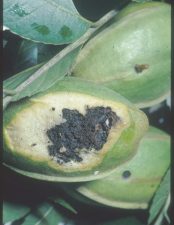
County Pecan Shows and Pest Impact Evaluations
One long-standing pecan tradition in Texas is the county pecan show and starting around November there are numerous county pecan shows across the state. This program I believe started in the early 1950s with the concept or intention to teach growers how to grade their pecans. In addition to the education on grading, these shows...
Read morePecan Weevil Distribution in Texas and the Texas Administrative Code
With a recent question on pecan weevil, shipping of pecans within Texas and the pecan weevil quarantine, I thought this would be a good time to run my somewhat annual request for any possible new pecan weevil infestations in Texas. The pecan weevil is one of the major nut pests of pecan and, because of...
Read moreThird generation pecan nut casebearer can cause significant late season damage
Every season about this time I have at least a few producers contact me to comment on the severity of damage they are experiencing by third generation pecan nut casebearer. I’ll be the first to admit here that as far as management, this is a generation that we have not paid much attention to. It...
Read moreWeevil emergence information deserves review by growers By Bill Ree
Every year across Texas there are orchards with pecan weevil that are at risk from late emerging pecan weevil adults. In the graphs that accompany this article one shows the normal emergence pattern of adult pecan weevils when emergence is not impeded by drought-hardened soils and the other shows emergence under drought conditions. Pecan weevils...
Read moreGrasshoppers frustrate many Texas pecan producers
The hot, dry, dog days of summer are upon us here in Texas and grasshopper and June beetle calls have been common. Over the past month, I have received several calls on grasshoppers and June beetles defoliating trees and I’m sure more calls are on the way. These hot dry conditions we are experiencing favor...
Read more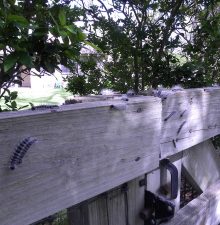
Walnut caterpillars active in some TX counties; know the signs
Every year there are isolated reports of walnut caterpillar (Datana integerrima) activity in Texas and so far this year I have received reports from Fort Bend and San Saba counties. Today I traveled to Richmond, Texas in Fort Bend County where there has been significant defoliation of natives and improved cultivars from the first generation....
Read more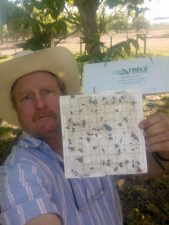
PNC monitoring using volunteer producers: a success story
Anyone that has tried to produce pecans, either commercially or as a homeowner will at some time realize the importance of monitoring and managing the pecan nut casebearer, (PNC) Acrobasis nuxvorella Neunzig. The impact from year to year from the larvae of this Pyralid moth can range from 100 percent crop loss by the first...
Read moreTexas Crop Registry
This month’s column on the Texas Crop Registry is a little different from my normal topics in that it does not address a specific insect or pest problem, but rather informs producers of a tool that I think is a win-win opportunity for both producers and pesticide applicators. Simply put, the purpose of the Texas...
Read more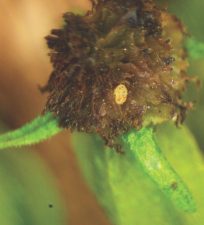
Time to prepare for pecan nut casebearer management
I think most producers are glad that the 2013 season is over and probably tired of the lingering cold. But ready or not, the 2014 season is just around the corner. As we approach the beginning of this new season, I want to remind producers that it will soon be time to start ordering your...
Read moreNew insecticides available for producers in 2014
I think that every day something happens that reminds me or just reinforces the fact that this is a fast-paced world and it is difficult, if not almost impossible, to catch up or even stay abreast with change. One of these realization events occurred for me earlier this month as I made my annual search...
Read moreConsider winter activities as part of pest control efforts
For a good part of Texas, the 2013 season is over and behind us and probably one we would like to forget. Sort of like some football seasons, a bit disappointing but always high hopes for next year. As we enter this downtime during the winter, there is really not much to be done on...
Read more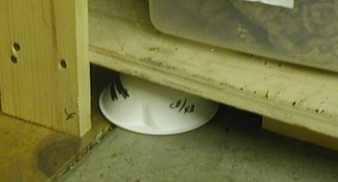
Stored-Product Insect Pheromones, Traps Provide Warnings of Potential Post-Harvest Problems
With harvest underway and pecans being cracked, shelled, processed and stored, I feel that this is a good time to address that other group of insects — stored product pests — that can infest pecans. As producers, processers, wholesalers and retailers strive to produce and present to the public a high-quality product, the importance of...
Read more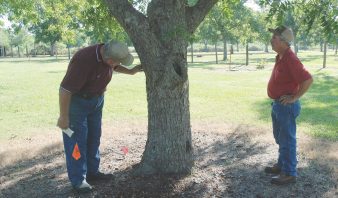
Tawny crazy ant confirmed in Texas commercial orchards
During July at the Texas Pecan Growers conference, it was brought to my attention by a producer that he had an unusually high number of ants in his orchard, which is located on the south side of Houston near Manvel, Texas. During August I made a visit to this orchard and unfortunately my suspicions were confirmed...
Read more
Time to prepare 2013 pecan weevil management plans
It is hard to believe that it is mid-August and time to start getting ready for pecan weevils. I feel that with the drought conditions across the state this looks to be a year, again, when producers will really need to pay attention to the potential for drought-delayed adult emergence. I have published this article...
Read more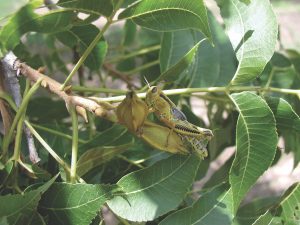
Grasshoppers plaguing many Texas pecan producers
The hot, dry, dog days of summer are upon us here in Texas and the grasshopper calls just keep on coming in. Over the past month, I have received more calls on grasshoppers than in any previous year and I’m sure more calls are on the way. These hot dry conditions we are experiencing favor...
Read more
Defoliating caterpillars are active in Texas
Unfortunately it looks like the Texas pecan crop will be light this year and during this type of season it is hard for producers to invest any more money than they have too. However, tree health has to be maintained and in some cases this means having to treat for any pest or disease that...
Read moreProducers have plenty of insecticide choices
During all of my years with Extension, one of the more frequent questions I receive from producers, regardless of the pest problem is: “what can I spray with?” It wasn’t long ago that the list of insecticides labeled for pecan was not all that long. I remember when we could list all the labeled commercial...
Read more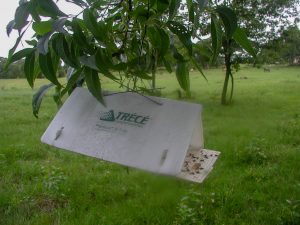
Time to prepare for Pecan Nut Casebearer management
It is hard to believe that the 2013 season is just around the corner and it will soon be time to start placing your PNC pheromone trap orders. Over the years there have been numerous articles on pecan nut casebearer management and the importance of using pheromone traps to detect the onset of the first-generation...
Read more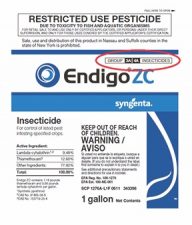
Pesticide Group Numbers – what are they?
For the past month or so I have been reviewing insecticide labels and new products in order to update the insecticide searchable database in the Pecan ipmPipe website. In addition to providing information on grazing restrictions, pre-harvest intervals and labeled pests, the “Group Number” for the product is also listed under class/mode of action column....
Read more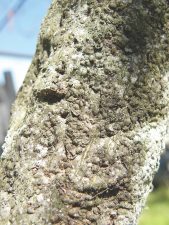
Dormant season a good time to monitor for obscure scale
We are fortunate that in this day and age of pecan production, producers have numerous tools available to help anticipate and control economic damaging populations of insects. There are pheromone traps, adult emergence traps, economic thresholds, online prediction models and a wide assortment of insecticides. However, there are some insects where detection will have to...
Read more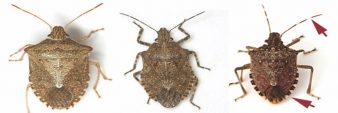
Texans urged to lookout for unwelcomed visitor
For this month’s article I am submitting a news release that was prepared by Texas A&M AgriLife Extension’s Steve Byrns and distributed to news outlets urging people to be on the lookout for the new invasive brown marmorated stink bug. Although I wrote on this subject for the June 2011 issue of Pecan South, given...
Read more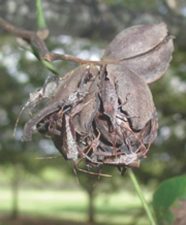
Late-season stink bug activity causes problems for some
I think that one of the most disappointing or frustrating aspects of pecan production has to be at harvest when a producer evaluates his/her crop and finds a significant amount of “stink bug” damage. In addition to this frustration, there can be a significant financial loss and a possible loss of a retail market. I...
Read more‘Hog cam’ could give upper hand on feral hogs
Harvest season is well underway across Texas and, for all practical purposes, problems from production insect pests are behind us. However, until the pecans are in the sack and in the barn producers still have to deal with wildlife depredation and one of these wildlife predators, feral hogs, seems to be in the news on...
Read more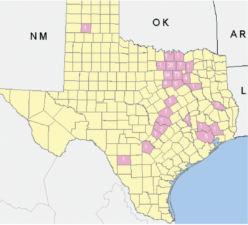
West Nile Virus a Threat to Ag Producers
Agricultural producers are outside a lot and with the high number of West Nile virus cases in Texas this year, especially the Dallas area, I am using some information that was put together by our Texas AgriLife Extension Entomologist, Dr. Sonja Swiger on some West Nile facts for this month’s column. West Nile is serious...
Read more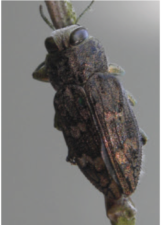
Dead, stressed trees producing abundance of wood-infesting insects
As I have driven around Texas this spring, the effects of last year’s drought are all too apparent with countless dead trees dotting the Texas landscape. Unfortunately, this also includes countless dead and struggling pecans. With this abundance of dead wood and timber, I am seeing an abundance of Buprestid beetles on trees this spring....
Read moreOnline Pesticide Information—Important Resource for Producers
The idea for this month’s column came to me earlier this month as I was speaking at a producer field day about some changes in pesticide label information and the seemingly surge in recent years in the number of (new) insecticides labeled for pecan. I think that one of the most useful pieces of information,...
Read morePheromone traps, websites are good PNC management tools
It is hard to believe that it is almost that time of year when producers across Texas and other states will need to start focusing their attention on a new season. Fortunately, a good portion of Texas has received significant winter rains so at least we are off to a good start, moisture-wise. Every year is different...
Read moreAssess your pest management, prepare for new season
It is sure hard to believe that by the time this issue of Pecan South hits the street, a new season will be just over the horizon. In this short period between the end of harvest and the startup of a new year, there are several items that can be discussed. Last year, with the exception...
Read moreBrown Marmorated Stink Bug Detected in Texas
Although I wrote on this subject for the July 2011 issue of Pecan South, I felt the need to rerun this information given that the brown marmorated stink bug, Halyomorpha halys, was just recently detected in Texas (Corpus Christi). This first Texas detection was reported by a pest control operator in early November where the specimens were...
Read moreTexas IPM Team in Year One of Imidacloprid Study
During the 2009 TPGA conference the Pecan IPM Steering Committee discussed and prioritized important IPM related issues and needs for the industry during the next 3-5 years. Insecticide resistance in yellow pecan aphids, which includes the blackmargined pecan aphid, Monellia caryella and yellow pecan aphid, Monelliopsis pecanis was recognized as a high priority need. During the spring of 2010,...
Read more2011 Full Of Entomological Challenges
With the above average temperatures, extreme drought and light crop, to say that 2011 has been a difficult year would be a gross understatement. In addition to these environmental problems, we have also seen several entomological challenges and changes —such as pecan nut casebearer being very early this spring, an almost complete absence of fall...
Read moreTime to Make Pecan Weevil Management Plans
It is hard to believe that it is mid-July and time to start getting ready for pecan weevils. I feel that, with the drought conditions across the state, this looks to be a year when producers will really need to pay attention to the potential for drought-delayed adult emergence. I have published this article several...
Read moreBe on the Alert for New Invasive Stink Bug
Today’s society is based on a world economy with goods and commodities being shipped to and from countries around the world — which is a good thing and we (pecan growers) are seeing that now with increased sales to China. World trade is great, but all of this commerce can have negative consequences, one of...
Read moreThat “Next” Generation of Pecan Nut Casebearer
So far I would say that the 2011 season has gotten off to a difficult and rough start with the drought, high diesel and gas prices, a lighter than expected crop (from what I have seen so far) and pecan nut casebearer showing up a bit early. Given the higher than average temperatures during March...
Read moreEPA – PESP sponsored project to start in 2011
Although I wrote about this project at the end of last year, I thought it is worth rerunning to serve as a reminder that this project will need input from producers. During 2010 the Texas pecan IPM program teamed with Dr. Juan Lopez, USDA-ARS Southern Plains Agricultural Research Center, to submit a proposal to the...
Read moreGood PNC Management Tools and Web-based Information Available
Although it is early March at the time of this writing it is not too early to start planning your pecan nut casebearer management program. Here in Texas, the pecan nut casebearer is considered our most important nut pest and management of this insect is really the cornerstone of our pecan IPM program. The results...
Read moreNatural Enemies (Beneficials) Help with IPM Efforts
In last month’s article I highlighted some of the natural enemy predators associated with pest insects, and for this month’s article, I will touch on the arthropod parasites. As mentioned in last month’s column, the role of and importance of natural enemies (beneficials) in a pest management (IPM) system can’t be overlooked or underestimated. For...
Read moreNatural Enemies Important Component of IPM
During this off-season, I want to discuss in a two-part series, beneficial insects or natural enemies associated with pecan and for this month I will highlight the predators with next month’s column devoted to the parasites. By definition, we will define “predator” as an organism that requires more than one prey to complete development. Ever...
Read moreImidacloprid Project Set To Launch In 2011
During 2010 the Texas pecan IPM program teamed with Juan Lopez, USDA-ARS Southern Plains Research Station, to submit a proposal to the EPA Pesticide Environmental Stewardship Program for funds to develop information relating to use patterns of imidacloprid-based insecticides to tolerance/resistance in black-margined pecan aphids, Monellia caryella. Lopez is a research entomologist with USDA- ARS and although his...
Read moreCause for Isolated Leaf Miner Outbreak a Mystery
During this past summer, my summer intern and I observed an isolated outbreak of leaf miners for which at this time I do not have an explanation. The infestation ran south on Hwy 50 from where Hwy. 50 joins Hwy. 79 in Robertson County to Hwy. 21 then continued south on 50 to the Hwy....
Read moreWhat happened to my pecans? Keep an eye on late-season pests.
As the harvest season gets into full swing, I start to receive inquires about “what happened to my pecans? They looked great last month and now they are no good”. On the entomology front, there are several insects such as pecan weevil, stink bugs, hickory shuckworm and pecan nut casebearer that can turn a promising...
Read moreStink Bug Management Presents Challenges For Producers
I would like to refer back to an excellent article by Monte Nesbitt in last month’s Pecan South, Southeastern Shakings, Page 6, where he talks about the difficulty in producing pecans during August. This not only applies to the horticultural challenges in filling out kernels but this is also a time when producers have to start...
Read moreGet Preparations Underway For 2010 Weevil Management
During 2009 many Texas pecan producers experienced greater than expected damage from pecan weevils and, although it is only late July, I feel it is time to address pecan weevil management so producers will have time to establish management plans. I have published this article several times in the past but because of the importance...
Read moreWalnut Caterpillar Makes Another Appearance In Texas
Every year there are isolated reports of walnut caterpillar activity, and so far for 2010, I have only received reports from 2 Texas counties — Victoria and DeWitt. And so far the only infestations have been in residential areas and not across commercial orchards. Although there are these isolated or localized areas of walnut caterpillar...
Read moreEarly Season Foliage Pests Sometimes Pose Problem
From my list of insects that feed on pecan, I have recorded over 100 that feed on the foliage, most of which are considered secondary or nuisance pests. From the emails, phone calls and orchard site visits I make, I have determined that 4 of the most common early-season foliage pest problems are phylloxera, sawfly,...
Read morePecan Nut Casebearer Management Tools
It is hard to believe that it is almost that time of year when producers across Texas and other states will need to start focusing their attention on their pecan nut casebearer management program. In fact, at the time of this writing, the first PNC adults have already been collected in pheromone traps in South...
Read moreCounty Field Day Surveys Important To Agrilife Extension
It is hard to believe that the 2010 season is just around the corner and with the start of this new season comes a Texas pecan tradition — the county pecan field day. These field days held during the spring across the state offer producers the chance to hear the latest in horticultural practices, IPM,...
Read moreHorticultural Oils For Pest Control: Use With Care
This is a topic I have written about several times in the past for this column, but every year I receive questions concerning the use of dormant oils on pecan so I will rerun again. Horticultural oils have been used in agriculture for over 100 years to control various soft bodied insects such as scale,...
Read moreLate-Season Weevil Emergence Causes Problems For Texas
In case you are thinking that you recently read an article on pecan weevil in this column, you’re right; see the September 2009 issue, Page 24. The reason that prompted this second article on pecan weevil in only a few months is that over the last six weeks I have heard numerous complaints on late...
Read more